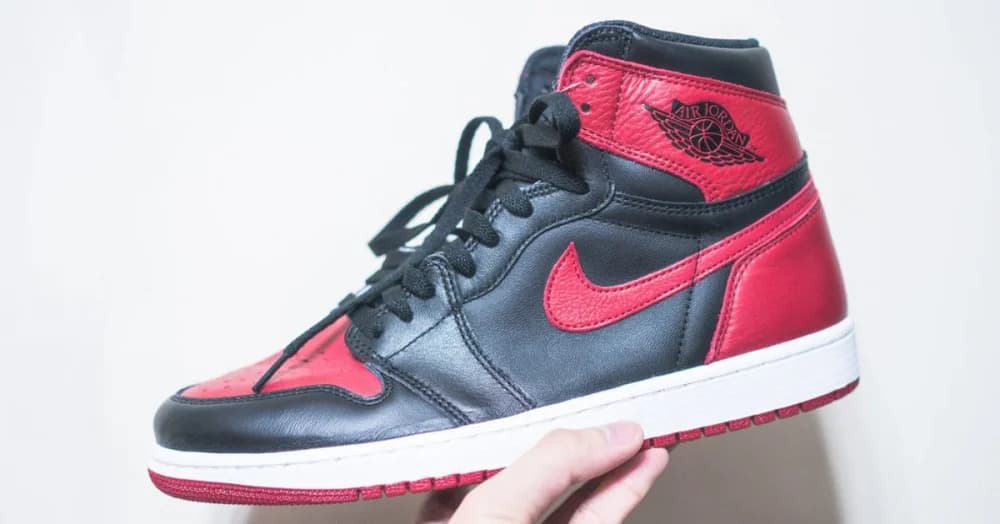When Nike recently teased fans with a crumpled letter hinting at the return of the iconic Air Jordan 1 “Banned,” sneakerheads were thrown into a frenzy. The letter was eerily similar to one sent by the NBA in 1985, supposedly banning Michael Jordan from wearing the shoes on the court. This sparked a legendary controversy, but was that really the full story? Let’s dig deeper into the truth behind this marketing masterpiece.
The Myth Nike Wants You to Believe About the Air Jordan 1 “Banned”
Michael Jordan, fresh out of UNC, took the NBA by storm in 1984. That same year, Nike offered him a groundbreaking $500,000 annual deal, which birthed the Air Jordan brand. Fast forward to his first preseason game against the Knicks in October 1984. Jordan wore bold black-and-red sneakers—dubbed “the Devil’s colors.” The NBA, under strict uniform rules, wasn’t impressed, especially Commissioner David Stern, who took issue with the color scheme.
What followed was a letter from the NBA, not directly mentioning a ban but stating that Jordan’s kicks didn’t meet the league’s “51% rule,” which required the majority of a player’s shoe to be white. The world believed Nike paid $5,000 every time Jordan wore them—cementing the shoes’ rebellious image.
Nike wasted no time capitalizing on this. They used the so-called “ban” to build a narrative of defiance. Ads showed black censor bars over the shoes, branding them as illegal, sparking immense curiosity. Sneakerheads were hooked. But here’s the twist—Jordan wasn’t even wearing the Air Jordan 1 during those games! It was actually the Nike Air Ship, sporting the same red-and-black design. Yet, Nike’s genius marketing made everyone believe otherwise. Jordan himself never wore the “Banned” Air Jordan 1 in an actual NBA game.
Nike’s myth-making turned the Air Jordan 1 into a global symbol of rebellion. Whether or not it was truly banned, fans didn’t care. They bought into the hype, making the “Banned” sneakers a must-have in every collection. Released just six times since 1985, the next drop is set for 2025, with rumors of a $250 price tag. The controversy is still cashing in.
In a surprising twist, Jordan didn’t even want to sign with Nike. He preferred Adidas but reluctantly agreed to meet with Nike after his mom, Delores, insisted. That decision changed the course of sports marketing forever. Today, Michael Jordan remains one of the highest-earning athletes of all time, and his brand? Unstoppable.
This article thrives on nostalgia and controversy, playing perfectly into the marketing strategies Nike has mastered. It also humanizes Michael Jordan, highlighting his initial reluctance, which adds a personal touch. The genius of this story lies in how it blends fact and myth, giving readers a compelling tale of rebellion and success. Adding emotional weight through Jordan’s relationship with his mother draws readers in further.
When Nike recently teased fans with a crumpled letter hinting at the return of the iconic Air Jordan 1 “Banned,” sneakerheads were thrown into a frenzy. The letter was eerily similar to one sent by the NBA in 1985, supposedly banning Michael Jordan from wearing the shoes on the court. This sparked a legendary controversy, but was that really the full story? Let’s dig deeper into the truth behind this marketing masterpiece.
The Myth Nike Wants You to Believe About the Air Jordan 1 “Banned”
Michael Jordan, fresh out of UNC, took the NBA by storm in 1984. That same year, Nike offered him a groundbreaking $500,000 annual deal, which birthed the Air Jordan brand. Fast forward to his first preseason game against the Knicks in October 1984. Jordan wore bold black-and-red sneakers—dubbed “the Devil’s colors.” The NBA, under strict uniform rules, wasn’t impressed, especially Commissioner David Stern, who took issue with the color scheme.
What followed was a letter from the NBA, not directly mentioning a ban but stating that Jordan’s kicks didn’t meet the league’s “51% rule,” which required the majority of a player’s shoe to be white. The world believed Nike paid $5,000 every time Jordan wore them—cementing the shoes’ rebellious image.
Nike wasted no time capitalizing on this. They used the so-called “ban” to build a narrative of defiance. Ads showed black censor bars over the shoes, branding them as illegal, sparking immense curiosity. Sneakerheads were hooked. But here’s the twist—Jordan wasn’t even wearing the Air Jordan 1 during those games! It was actually the Nike Air Ship, sporting the same red-and-black design. Yet, Nike’s genius marketing made everyone believe otherwise. Jordan himself never wore the “Banned” Air Jordan 1 in an actual NBA game.
Nike’s myth-making turned the Air Jordan 1 into a global symbol of rebellion. Whether or not it was truly banned, fans didn’t care. They bought into the hype, making the “Banned” sneakers a must-have in every collection. Released just six times since 1985, the next drop is set for 2025, with rumors of a $250 price tag. The controversy is still cashing in.
In a surprising twist, Jordan didn’t even want to sign with Nike. He preferred Adidas but reluctantly agreed to meet with Nike after his mom, Delores, insisted. That decision changed the course of sports marketing forever. Today, Michael Jordan remains one of the highest-earning athletes of all time, and his brand? Unstoppable.
This article thrives on nostalgia and controversy, playing perfectly into the marketing strategies Nike has mastered. It also humanizes Michael Jordan, highlighting his initial reluctance, which adds a personal touch. The genius of this story lies in how it blends fact and myth, giving readers a compelling tale of rebellion and success. Adding emotional weight through Jordan’s relationship with his mother draws readers in further.







